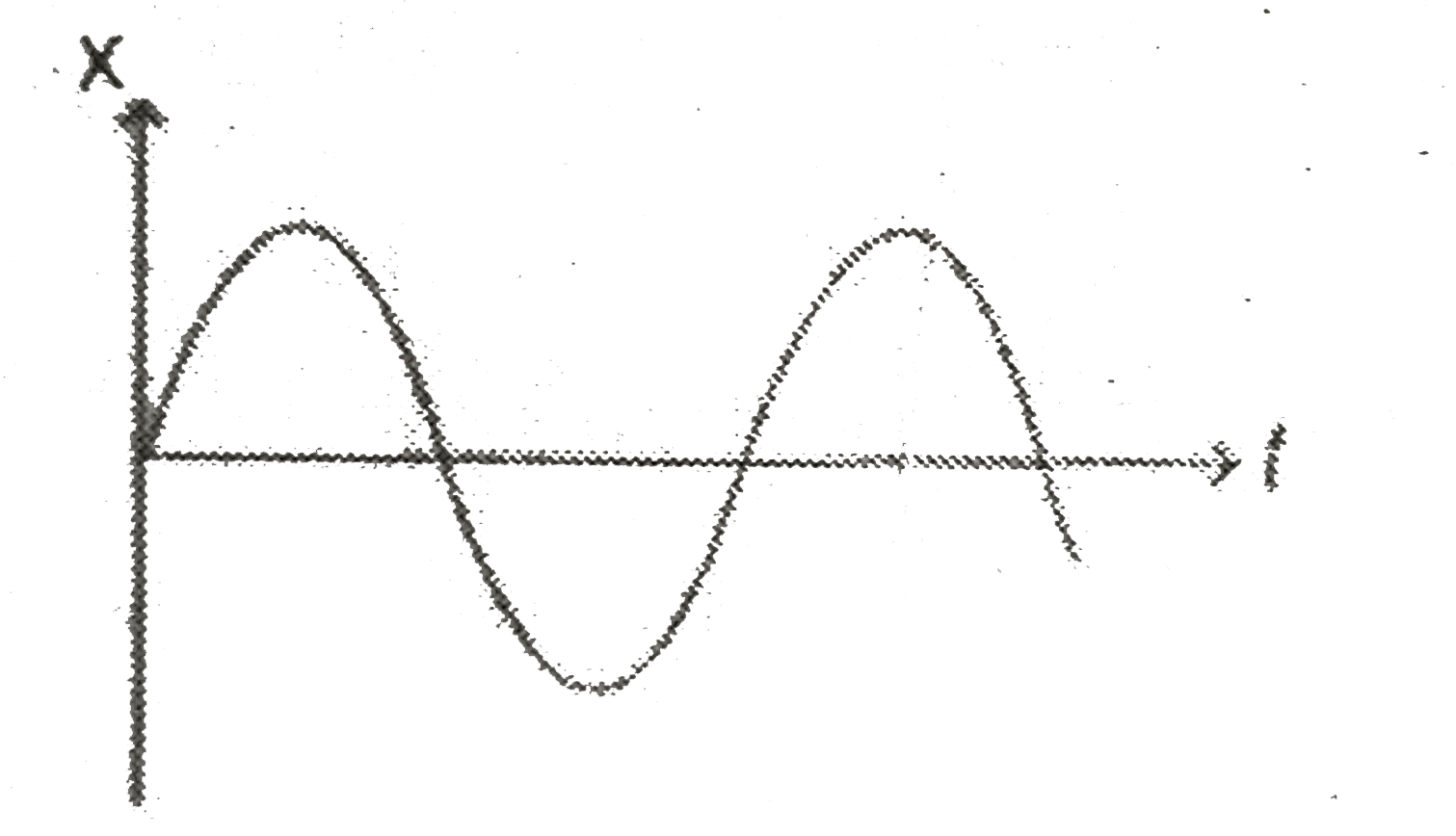Displacement-time equation of a particle execution SHM is x=A sin(ωt+π6)
Time taken by the particle to go directly from
x=−A2→x=+A2is
π2ω
π2ω
2πω
πω
The correct Answer is:A
To solve the problem of finding the time taken by a particle executing simple harmonic motion (SHM) to go from x=−A2 to x=+A2, we will follow these steps:
Step 1: Set up the displacement equation
The displacement-time equation of the particle is given as:
x=Asin(ωt+π6)
Step 2: Find the time t1 when x=−A2
We set the displacement equal to −A2:
−A2=Asin(ωt1+π6)
Dividing both sides by A:
−12=sin(ωt1+π6)
The sine function equals −12 at angles:
ωt1+π6=−π6+2nπ(for any integer n)
Solving for t1:
ωt1=−π6−π6+2nπ
ωt1=−π3+2nπ
Taking n=0:
t1=−π3ω
Step 3: Find the time t2 when x=+A2
Now we set the displacement equal to +A2:
A2=Asin(ωt2+π6)
Dividing both sides by A:
12=sin(ωt2+π6)
The sine function equals 12 at angles:
ωt2+π6=π6+2mπ(for any integer m)
Solving for t2:
ωt2=π6−π6+2mπ
ωt2=2mπ
Taking m=0:
t2=0
Step 4: Calculate the time taken to go from x=−A2 to x=+A2
The time taken Δt is given by:
Δt=t2−t1
Substituting the values we found:
Δt=0−(−π3ω)
Δt=π3ω
Final Answer
The time taken by the particle to go directly from x=−A2 to x=+A2 is:
Δt=π3ω
---
The displacement-time equation of the particle is given as:
x=Asin(ωt+π6)
We set the displacement equal to −A2:
−A2=Asin(ωt1+π6)
Dividing both sides by A:
−12=sin(ωt1+π6)
The sine function equals −12 at angles:
ωt1+π6=−π6+2nπ(for any integer n)
Solving for t1:
ωt1=−π6−π6+2nπ
ωt1=−π3+2nπ
Taking n=0:
t1=−π3ω
Now we set the displacement equal to +A2:
A2=Asin(ωt2+π6)
Dividing both sides by A:
12=sin(ωt2+π6)
The sine function equals 12 at angles:
ωt2+π6=π6+2mπ(for any integer m)
Solving for t2:
ωt2=π6−π6+2mπ
ωt2=2mπ
Taking m=0:
t2=0
The time taken Δt is given by:
Δt=t2−t1
Substituting the values we found:
Δt=0−(−π3ω)
Δt=π3ω
The time taken by the particle to go directly from x=−A2 to x=+A2 is:
Δt=π3ω
Topper's Solved these Questions
- SIMPLE HARMONIC MOTIONBook:DC PANDEY ENGLISHChapter:SIMPLE HARMONIC MOTIONExercise:JEE Advanced
Explore 34 Videos
- SIMPLE HARMONIC MOTIONBook:DC PANDEY ENGLISHChapter:SIMPLE HARMONIC MOTIONExercise:More than one option is correct
Explore 50 Videos
- SIMPLE HARMONIC MOTIONBook:DC PANDEY ENGLISHChapter:SIMPLE HARMONIC MOTIONExercise:Exercise 14.4
Explore 4 Videos
- SEMICONDUCTORS AND ELECTRONIC DEVICESBook:DC PANDEY ENGLISHChapter:SEMICONDUCTORS AND ELECTRONIC DEVICESExercise:More than One Option is Correct
Explore 3 Videos
- SOLVD PAPERS 2017 NEET, AIIMS & JIPMERBook:DC PANDEY ENGLISHChapter:SOLVD PAPERS 2017 NEET, AIIMS & JIPMERExercise:Solved paper 2018(JIPMER)
Explore 38 Videos
Similar Questions
The displacement-time equation of a particle executing SHM is A−Asin(ωt+ϕ). At tme t=0 position of the particle is x=A2 and it is moving along negative x-direction. Then the angle ϕ can be
View SolutionA particle executes S.H.M with time period 12 s. The time taken by the particle to go directly from its mean position to half its amplitude.
View SolutionDisplacement-time graph of a particle executing SHM is as shown

The corresponding force-time graph of the particle can be
View SolutionThe motion of a particle is given by x=Asinωt+Bcosωt. The motion of the particle is
View SolutionDisplacement of a particle executing SHM s x=10(cosπt+sinπt). Its maximum speed is
View SolutionThe displacement of a particle executing SHM is given by
y=0.5 sin100t cm . The maximum speed of the particle is
View SolutionThe displacement of a particle executing SHM is given by y=0.25 sin(200t) cm . The maximum speed of the particle is
View SolutionDisplacement-time equation of a particle executing SHM is x=4sin(ωt)+3sin(ωt+π/3)
Here, x is in cm and t ini sec. The amplitude of oscillation of the particle is approximately.
View SolutionA particle executes SHM with a time period of 4s. Find the time taken by the particle to go directly from its mean position to half of its amplitude.
View SolutionA particle is performing SHM of amplitude 'A' and time period 'T'. Find the time taken by the particle to go from 0→A/2.
View Solution